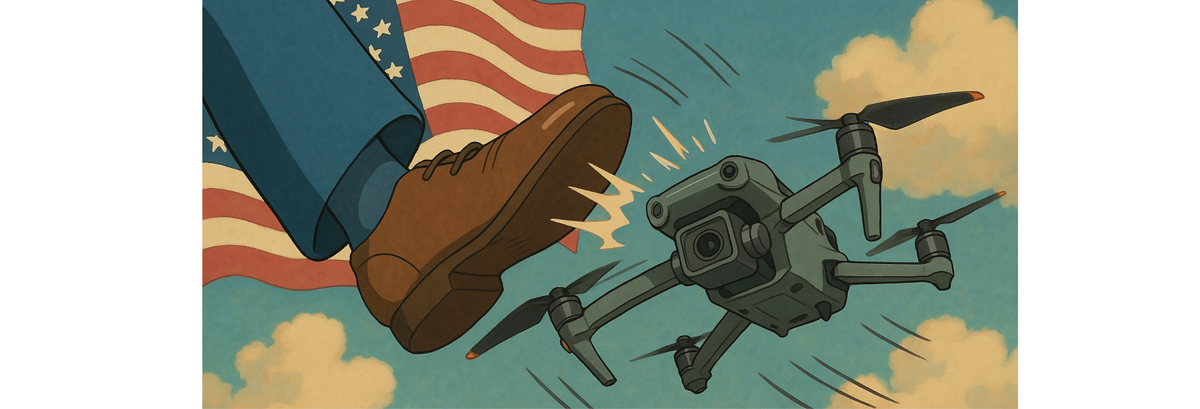DJI Drone Ban

As of April 2025, DJI drones face increased scrutiny in the United States. While no outright federal ban exists, legislative measures and trade policies indicate uncertainty for DJI and its users in America.
The Countering CCP Drones Act initially aimed to restrict DJI by adding the company to the FCC's Covered List. Inclusion would have effectively banned new DJI drones from connecting to American communications networks, severely limiting their operational capabilities. Although the U.S. House of Representatives passed this measure, it did not make it into the final version of the FY25 National Defense Authorization Act (NDAA). Instead, the NDAA included Section 1709, which requires a comprehensive risk assessment of Chinese-made drones within the following year. Depending on its findings, this assessment could lead to new restrictions or bans.
Trade tensions between the United States and China also complicate the issue. A recent escalation led China to impose a 34% tariff on all U.S. imports, effective April 10, 2025. This retaliation to American tariffs could significantly affect drone pricing and availability, potentially making DJI drones and related components more expensive or difficult to obtain.
Hobbyists using DJI drones might soon find purchasing new models challenging due to increased prices and reduced availability. Software updates, critical for maintaining performance and security, could also be impacted if DJI faces operational restrictions. Professionals in agriculture, construction, and public safety might face even more significant disruption. These users depend on reliable drone technology for critical tasks and might need to invest substantial resources in transitioning to alternative solutions if DJI faces further restrictions.
Existing DJI drone users have concerns about whether their drones could become inoperable or "bricked." While it's unlikely that current drones would suddenly stop functioning, users might experience limitations. DJI may restrict software updates, impacting features, security, and compatibility with third-party applications. Regulatory bodies could impose flight restrictions or geofencing to manage security risks, though a complete grounding of existing drones appears improbable at this stage.
Lastly, ongoing supply chain disruptions due to tariffs and export controls, particularly on critical materials like rare earth elements, further complicate the drone market. These disruptions might affect DJI and other manufacturers reliant on Chinese components, demonstrating the broader implications of U.S.-China trade relations on technology sectors.
Given this fluid situation, DJI drone users (hobbyists and professionals) should closely monitor legislative and regulatory developments.